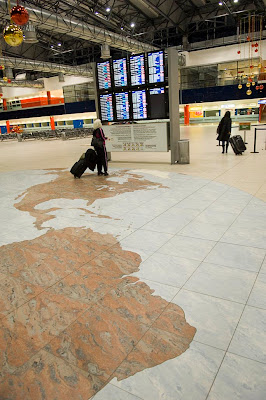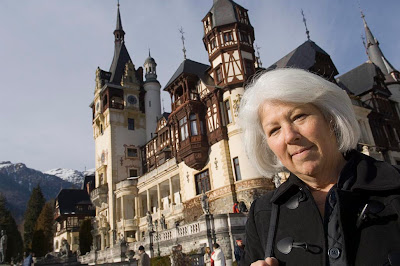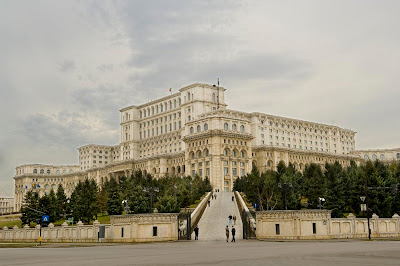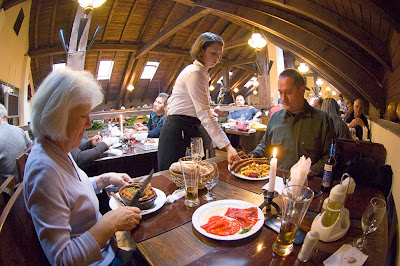
Romania! The name conjures up thoughts of gypsies and Dracula; communist oppression and melodramatic violin music. It’s all that and a bag of vampire stakes.

Ask the average American-on-the-street to tell you something about Romania and most will scratch their head and ask, “Is it that-there new Eye-tall-yen diner in town?” or scratch some other body part, spit and say, “That’s some fur-en place, ain’t it? Somewheres around South Dekody, right?” A precious few will come up with Transylvania – then they will invariably treat you to an on-the-spot embarrassing impersonation of it’s beloved native son, Dracula.
Test your evil laugh against this one.
I was not sniggering when I wrote ‘beloved son’. Vlad Tepes, aka Dracula, was a real life Transylvanian Prince and the inspiration for Bram Stokers’ gruesome vampire tale. But Romanians consider Dracula an admired national war hero. They are quite puzzled and decidedly not amused that one of their courageous historic figures has been so egregiously maligned and libeled. It would be like the world thinking George Washington was a serial rapist.

Transylvanians will eagerly tell you that Dracula fought tirelessly if ruthlessly against an invading Turk horde back in the mid 1400s. BTW, Dracu means Dragon in ancient Romanian and was also the name of a prestigious royal order, sorta like the Elks. Vlad’s father was a member. DracuLA signified a son of a Dragon.

Sure, Bad-boy Vlad impaled lots of people (Tepes is the Romanian word for impaler), but all is fair in love and war against marauding Turks, right? And Vlad loved to war. But who knows which side was more, shall we say - blood-thirsty? Nod, nod, wink, wink. Gory and gruesome stuff? Sure. Done right, impaled people sometimes took days to die. But hey, they didn’t have modern, efficient Uzis back then. On the positive side, once the bodies were removed the spikes were recyclable. Vlad is credited with skewering tens of thousands of victims, so recycled spikes saved many a tree from the woodsman axe. You could say Vlad was a medieval environmentalist, a lover of nature if not humans.
Legend also says Vlad enjoyed watching impalings during his elaborate prolonged dinners. I live part-time in Italy so when someone mentions dinner my first thought is about the wine selection… A white wine with peasant-on-a-stick and a flagon of red with the heartier Turk-kabobs?

They say you can see The Palace of Parliment from outer space. Originally built as the uber-extravagant private home of Ceaucescu, the evil tyrannical dictator that was overthrown in 1989. It boasts over 1,000 rooms.We met a local who worked at The Palace of Parliment. He told us the mirror image of the above ground complex exists underground. He shook his head when talking, still astonished at the fact that every day when he puts his hand on the building door, it takes another 30 minutes, down endless corridors and 4 different sets of lifts before he reached his office!

Romania’s capitol, Bucharest, is not an old city by European standards, dating back to only the 1400s. It pretty much reinvented itself in the late 1800s, employing French and French-trained architects throughout the city. The result - parts of the city looks more like Paris than Paris itself does. Bucharest even has an all-too-familiar looking Triumphal Arch on the imposing Soseaua Kiseleff, a broad boulevard longer than Paris’s famed Champs-Elysees. The city’s nickname, The Paris of the East, is well earned.
Bucharest is at least the third major world city I’ve visited that likes to think of itself as Paris-like. Buenos Aires wants to be called the Paris of South America, Shanghai is supposedly the Paris of the Orient. My quick research came up with no less than 21 major world cities that want to be called the Paris of Something including: Detroit, the Paris of the Midwest (?) and Saskatoon, Saskatchewan, the Paris of the Prairie. No wonder the French are so, eh, shall we say proud of themselves?

Communist rule put a halt to Bucharest’s cosmopolitan, café lifestyle. The once charming Parisian type buildings now sport a layer of grime and look more than a little frayed around the edges. They still appear lighthearted and cheerful from a distance but up close they look sad and neglected.
But cheer up. Bucharest and Romania in general has one of the fastest rising economies in Europe. There are still travel bargains to be had there – skiing, pampering spas, castles to gawk at - but you better hurry.